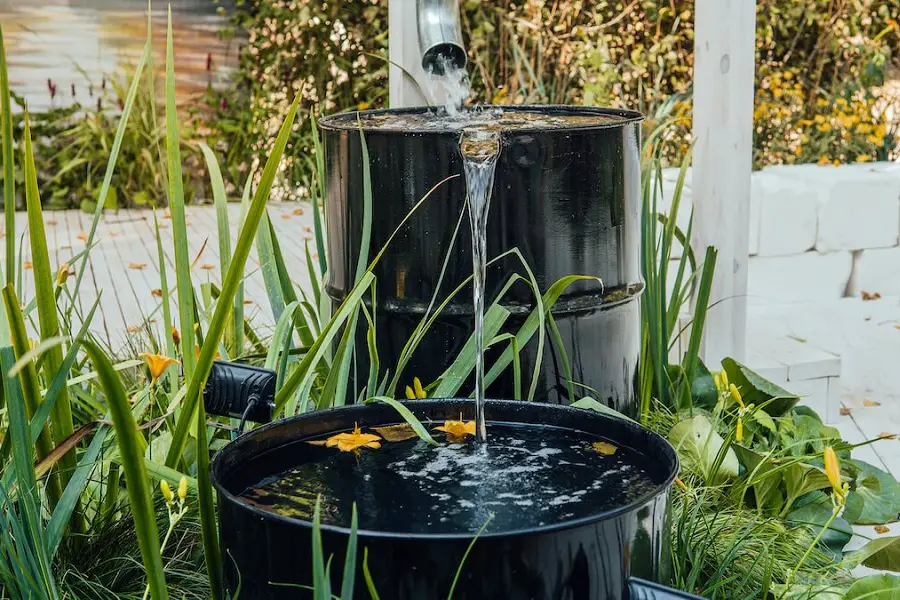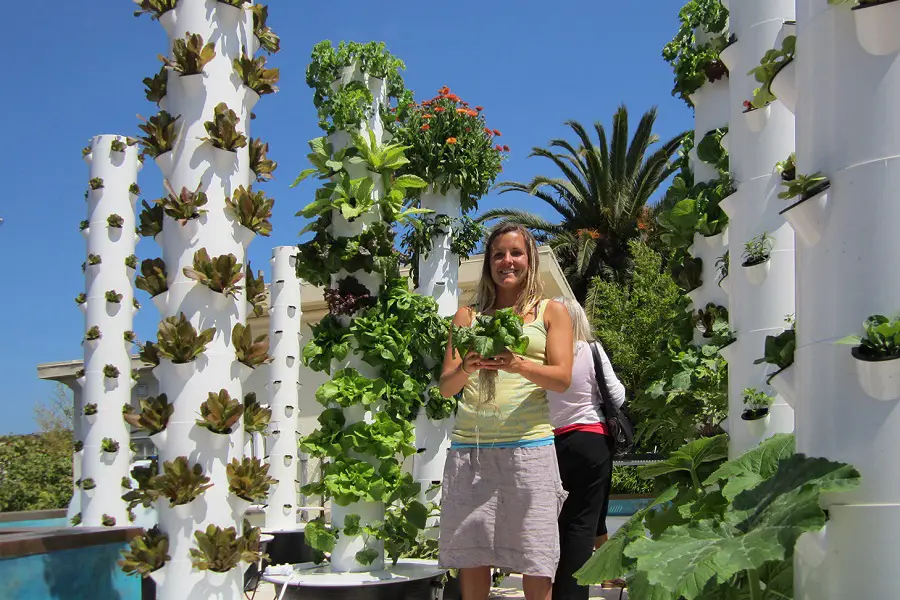Gardeners often think of experimenting or updating their hydroponic system to streamline their growing process, increase yields, or develop better cost-effective techniques.
To revise their plans, many growers, especially newbies, wish to know whether using rainwater is a good idea or not.
This article will dive into the topic and provide helpful insight into this popular hydroponic question.
How Is Rainwater Different
Rainwater is different from water collected and distributed by other methods because of its low chemical percentage.
You must have seen people using this rainwater for various uses like washing clothes, utensils, flushing toilets, cleaning vehicles, washing pets, and much more but can we pair rainwater with gardening?
Hydroponic farming needs a healthy water supply as the whole gardening is based on water and its nutrients. The most common options include tap water, wells, and distilled water.
However, growers also tend to lean towards using rainwater for their hydroponic gardening needs. That brings us to the following question: Can we use rainwater for hydroponics, and is it safe?
Can Rainwater Be Used In Hydroponics?
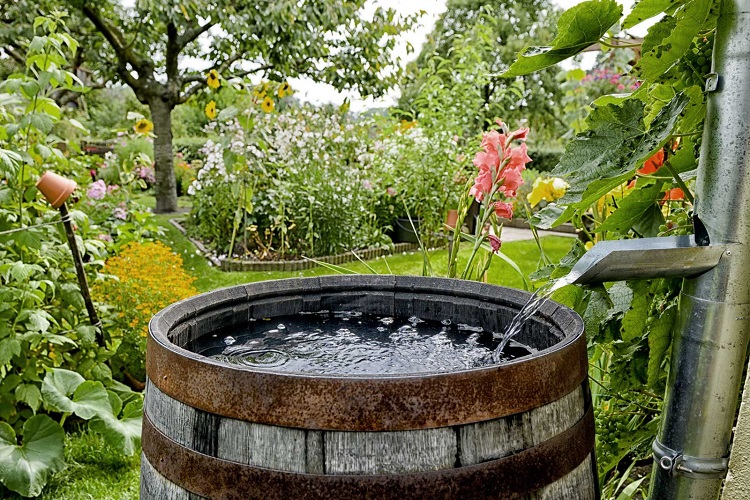
Yes, it is acceptable to use rainwater in your hydroponics system.
Additionally, we can say that rainwater is relatively safe to use in your gardening systems compared to tap water.
Rainwater does not contain artificial contaminants, dissolved minerals, or chemicals like chlorine or chloramine. Moreover, rainwater has a slightly acidic pH level, making it ideal for growing produce via a hydroponic system.
However, since growers will use the water to grow edible plants, we suggest treating the water beforehand. As most rainwater is collected through channels around impervious surfaces like roofs, it is necessary to clean the water before using it.
The cleanliness of your rain catchment system is directly related to the purity of your rainwater.
Pros
Natural and green
Rainwater is entirely natural and doesn’t need any electrical systems, dams, or power hookups like tap water.
It is undoubtedly a more sustainable way to grow your garden without any fuss. In addition, rainwater harvesting practices are perfect for people living off-grid.
Less contamination
Since the rainwater doesn’t go through any pipes, tanks, or big reservoirs, it lacks contaminants and chemicals.
One can grow fully organic produce without introducing any harmful chemicals in their gardening practices.
Free to use
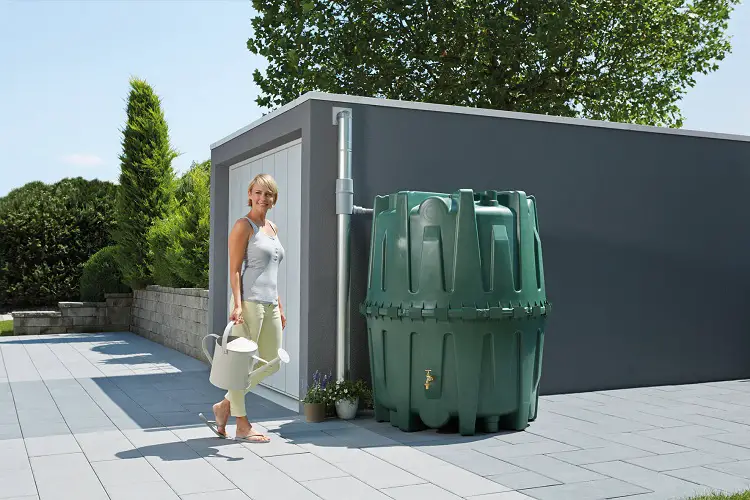
This point is the most vital positive of using rainwater for your hydroponic systems. You can fill your tanks with gallons of free water instead of using a tap and increasing your water bill.
It is a genuinely ideal method to grow your plants efficiently without spending a dime!
Easy to collect
One can collect rainwater quickly as it doesn’t need hi-tech devices or complicated systems. A simple catchment system plus a tank are enough to start your experiment.
Similarly, the system needs less maintenance, and people of all ages can maintain and use it without any trouble.
Ideal for hydroponic systems
Since rainwater has a lower pH value of around 5- 5.5, it is ideal for hydroponic systems. Most tap water has a higher pH level that does not provide sufficient nutrients to the roots of the plants.
Cons
Contaminants and acid rain
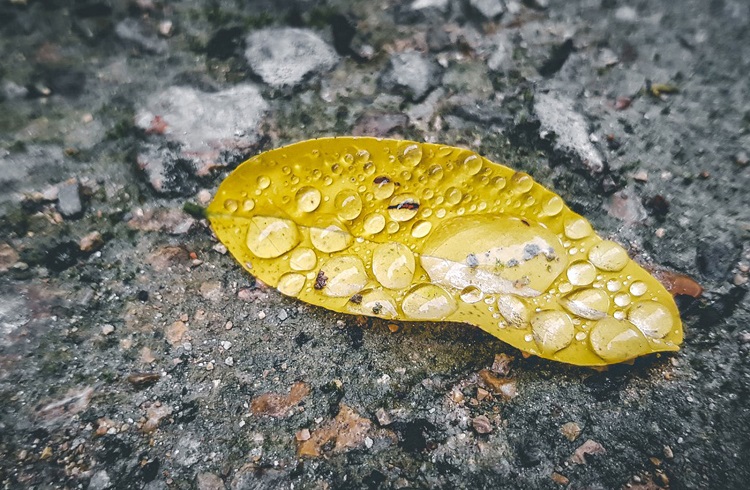
Rainwater can contain a lot of contaminants if one doesn’t collect and store it in a proper receptacle. Similarly, areas with high pollution can often result in acid rain, which is a bad fit for gardening purposes.
Unpredictable flow
Since rainfall is hard to predict, no one can calculate a fixed number of gallons in a specific time frame. That can be a huge problem, especially if your area has scanty rainfall.
Regular maintenance
Any rainwater harvesting system requires regular maintenance, primarily if the water is used for cooking or gardening.
These systems are often prone to unwanted algae buildup, rodents, lizards, insects, and more. If one fails to maintain it properly, it can become breeding grounds for animals and insects.
Best Way To Harvest Rainwater
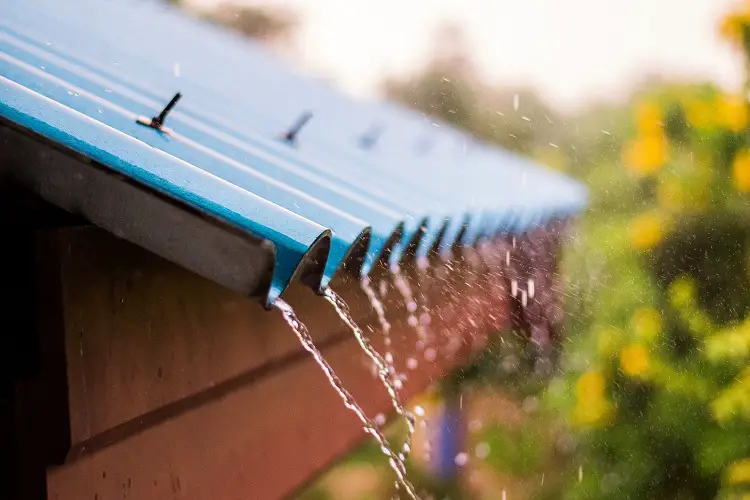
There are numerous ways to harvest rainwater; however, we suggest opting for the Roof-top Rainwater Harvesting (RRH) as it is the easiest, most affordable, and highly accessible.
Follow these steps to construct your rainwater harvesting system for gardening:
Step 1: Preparing catchment surface
This step is the essential part of any rainwater harvesting technique.
Since we are using the RRH method, you need to clean your roof and prepare a clean gutter system for the water to flow.
A slanted roof with gutters is an ideal catchment surface as it will collect more rainwater in a short time.
Step 2: Storage reservoir
This tank is the actual component to collect all the rainwater that flows through the gutters. You will surely need a big tank to collect a considerable amount of water.
Check your regular water requirements and buy a storage tank corresponding to the need. If you have a high-scale hydroponic system, we recommend investing in multiple storage tanks.
Always buy tanks that are darker in color to limit the growth of algae in your water storage reservoir.
Step 3: Filters and traps
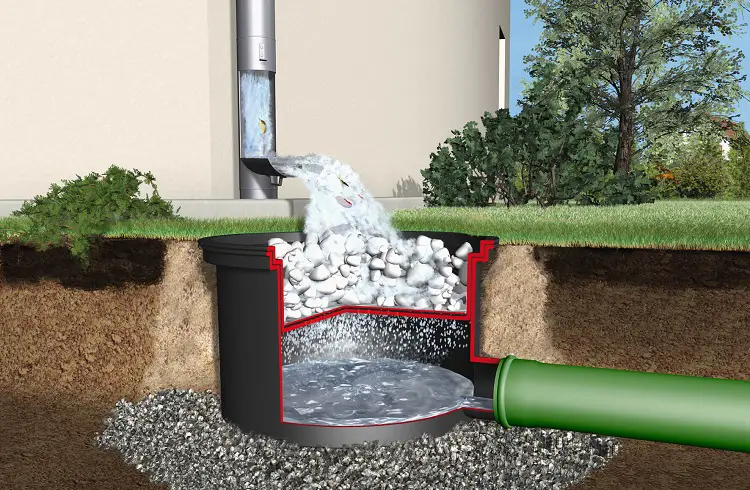
If you wish to have a functional rainwater harvesting system, consider spending a lot of time on filters and traps.
You need to strategically fix sediment traps to keep the dirt, stones, leaves, and other foreign contaminants at bay. In addition, pay extra attention to the first flush of the rain as it contains the most continents.
You can set up a first flush divider to separate the dirty water from contaminating your storage tanks. Lastly, always cover your storage tank to prevent insects from entering the tank and discourage evaporation.
Step 4: Distribution system
The distribution system is the final step through which the water will move from the storage tank to your hydroponic system.
A simple spigot with a gravity-fed water line is ideal for small-scale gardening. Consider placing your tank on an elevated level if you use a gravity-fed distribution system.
Gardeners can also use a small pump if their hydroponic system is far or vast.
Conclusion
We hope this article helped you seek answers to all your rainwater questions.
We highly suggest choosing rainwater for your hydroponic system if your location has decent rainfall.
However, before you initiate including rainwater in your project, consider testing the water for pH balance and primary contaminants.

